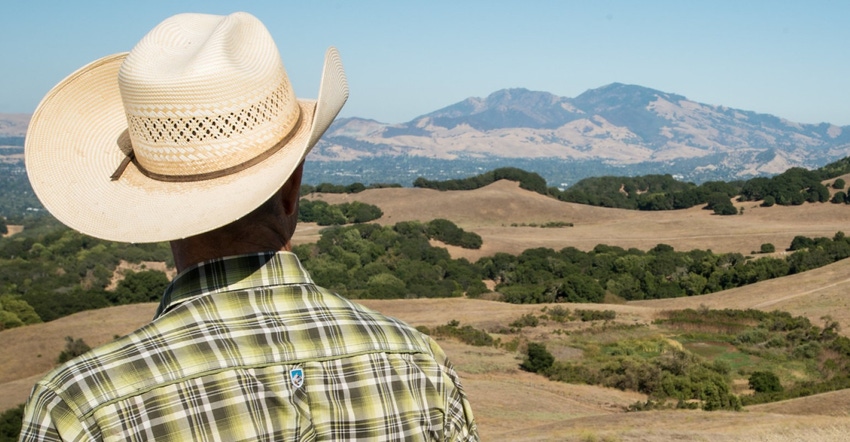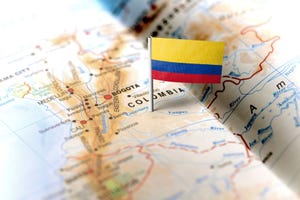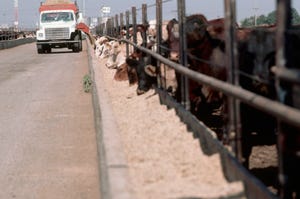NRCS launches working rangelands conservation frameworks
Frameworks will help guide voluntary conservation work over the next five years.
April 7, 2021

USDA unveiled new action-based frameworks to increase conservation work to address threats facing America’s working rangelands. These frameworks are designed to benefit both agriculture and wildlife in sagebrush and grassland landscapes of the western United States.
USDA’s Natural Resources Conservation Service partnered with state-level organizations from across the West to develop the new frameworks to combat the most severe and large-scale threats: woody encroachment, land-use conversion, exotic annual grass invasion and riparian and wet meadow degradation. More than one million acres of Western rangelands are lost annually to invading non-native grasses, plows or land development. The frameworks will help guide voluntary conservation work over the next five years and will contribute to USDA’s efforts to make our nation a leader on climate change mitigation, adaptation, and resilience.
Farmers, ranchers and private landowners in the sagebrush or Great Plains region can work with NRCS to implement conservation practices on their working lands, including those that further these two conservation action plans. NRCS provides technical and financial assistance for prescribed grazing, prescribed burning, woody species removal and other key practices.
“America’s iconic rangelands support ranchers and rural communities, provide wildlife habitat and store carbon,” says Gloria Montaño Greene, USDA deputy undersecretary for food production and conservation. “Under these new frameworks, NRCS and grassroots partners will defend intact grasslands, reduce vulnerability to future threats and conserve the last remaining rangeland regions west of the Mississippi River.
“They provide a common vision and coordination to address resource concerns and ecosystem threats across state boundaries, and new scientific tools now provide unprecedented opportunities to develop strategic approaches to combat these issues, especially when combined with on-the-ground landowner and rancher expertise,�” she adds.
In 2020, a multi-state planning effort produced the first biome-scale frameworks for wildlife conservation on working rangelands in grassland and sagebrush biomes. A biome is a large area of land classified based on the climate, plants and animals that make their homes there. This joint effort builds on past achievements of the Lesser Prairie-Chicken and Sage Grouse Initiatives that together have partnered with more than 3,261 ranchers and conserved 10,309,950 acres of working rangelands. This is an area more than four times the size of Yellowstone National Park that supports working agricultural operations while providing critical wildlife habitat and valuable carbon sequestration.
New frameworks efforts will further support conservation and restoration of rangelands through practices that limit soil disturbance, support proper grazing management, promote the strategic use of prescribed fire and support native grassland species with deep root systems to increase grassland carbon stocks.
As the targeted strategies in the frameworks are implemented locally, NRCS will provide annual tracking and reporting of milestones, assistance in spatial targeting and ongoing science-based assessments of conservation outcomes. For example, the Rangeland Analysis Platform provides vegetation data to inform land management and conservation strategies. The free, online tool empowers landowners and resource managers to track vegetation over the past 35 years, equipping them with information to target actions and achieve desired outcomes.
This work will be guided by Working Lands for Wildlife, the premier approach of NRCS for conserving American working lands to benefit people, wildlife and rural communities. Rather than individual funding sources used in previous initiatives, the new frameworks utilize the full force of conservation partner resources. This also allows WLFW to bring together expertise across boundaries and create a strategic approach targeting the most severe and large-scale threats causing biome-level impacts.
NRCS will share additional information on the new frameworks during a Thursday, April 8 webinar at 12:00-1:00 p.m. EDT. The webinar is open to the public. For webinar information or to learn more about the frameworks, visit wlfw.rangelands.app.
Source: USDA’s Natural Resources Conservation Service, which is solely responsible for the information provided and is wholly owned by the source. Informa Business Media and all its subsidiaries are not responsible for any of the content contained in this information asset.
About the Author(s)
You May Also Like



